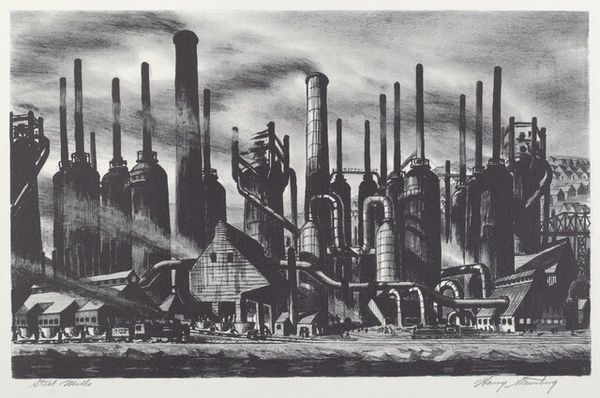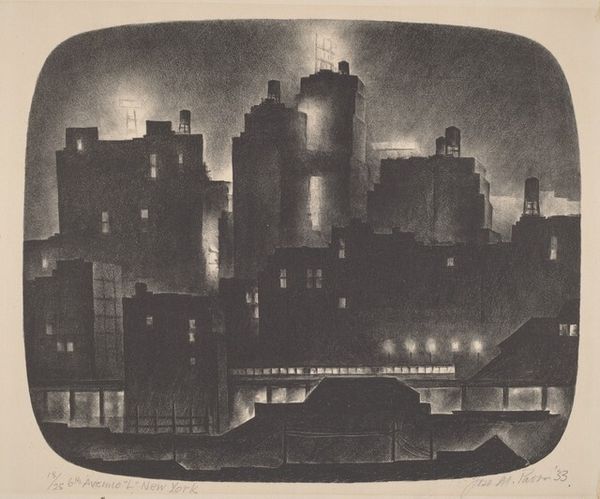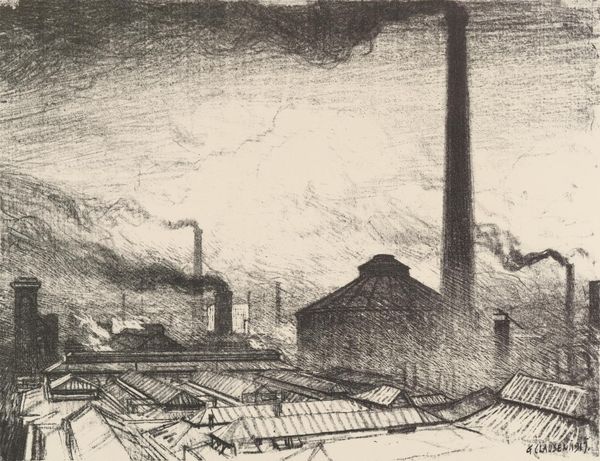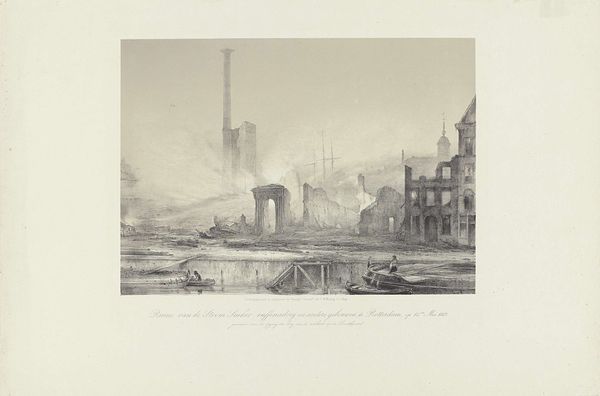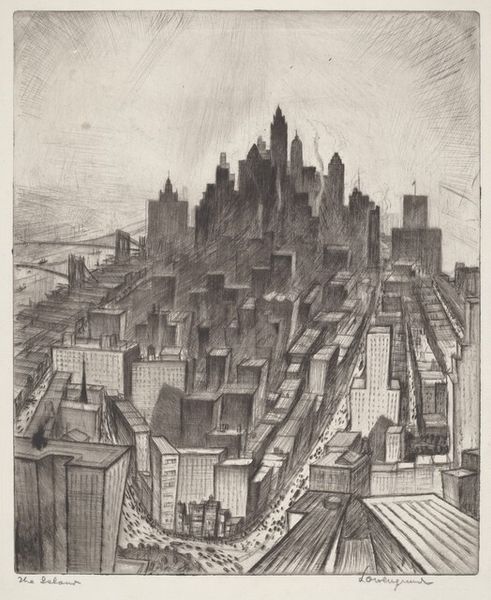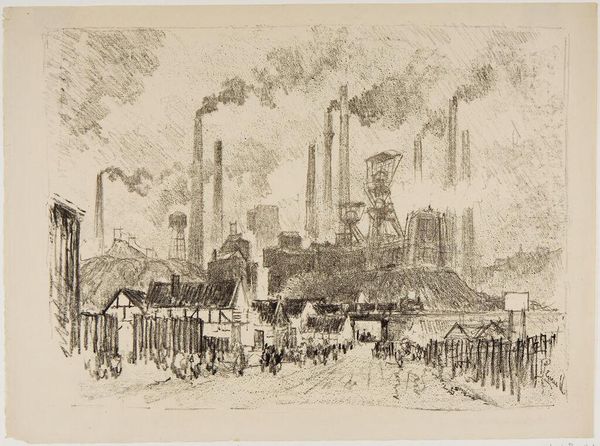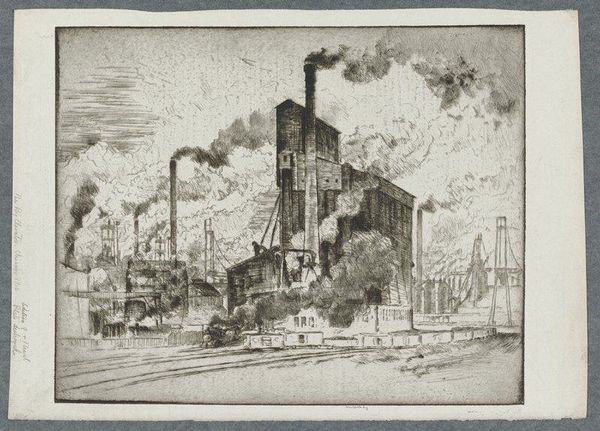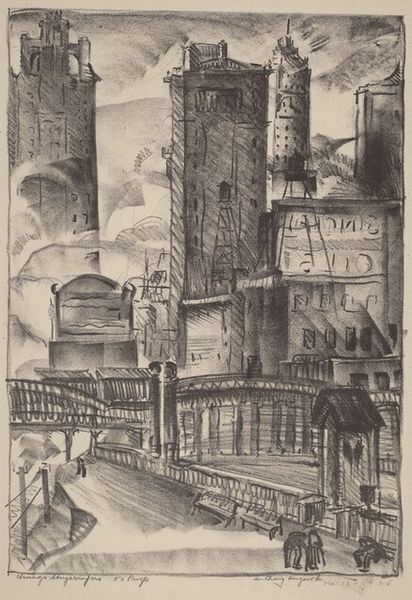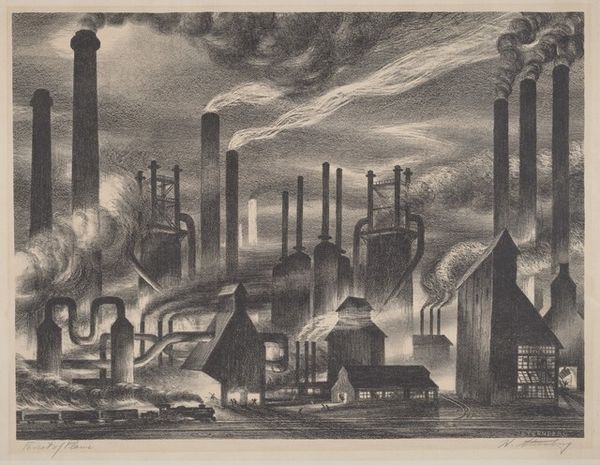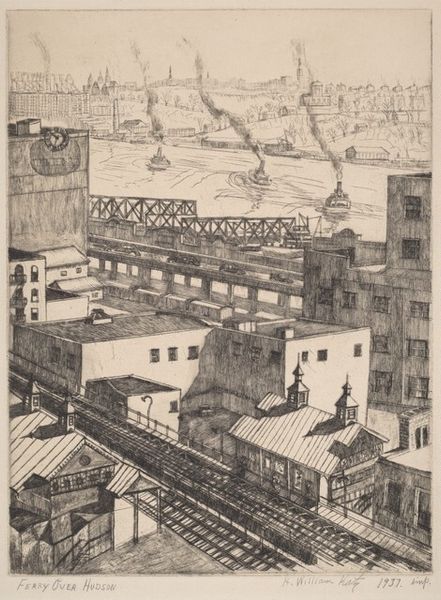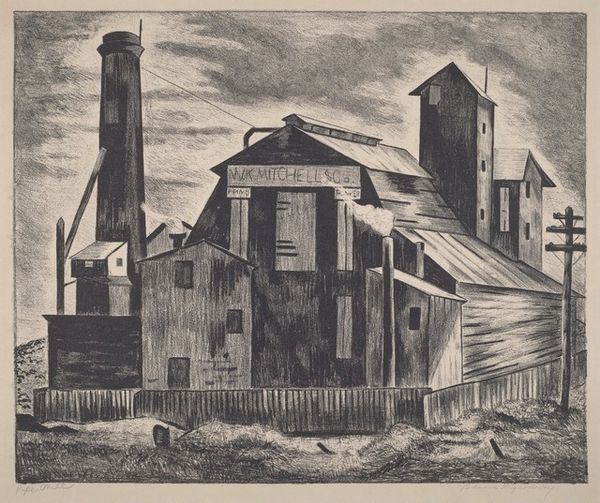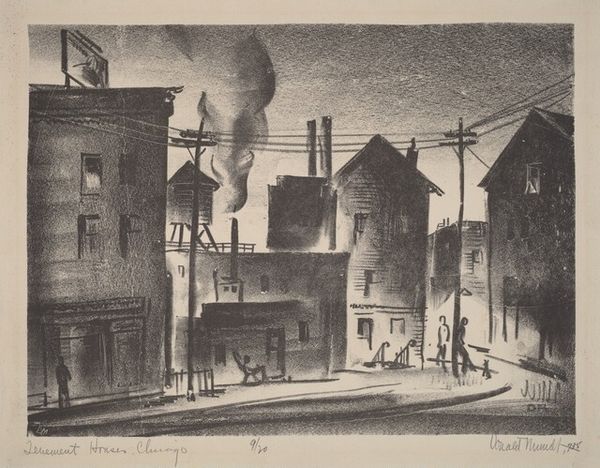
drawing, print, charcoal
#
drawing
# print
#
pencil sketch
#
charcoal drawing
#
pencil drawing
#
ashcan-school
#
cityscape
#
charcoal
#
charcoal
#
realism
Dimensions: image: 434 x 466 mm paper: 494 x 583 mm
Copyright: National Gallery of Art: CC0 1.0
Curator: "The City," a 1936 print by Raymond White Skolfield, depicts an urban landscape in charcoal. It has a gritty, almost oppressive feel. What catches your eye in terms of its artistic merit? Editor: It’s the density that overwhelms me – the sheer volume of buildings piled on top of each other, rendered in such stark contrasts of light and shadow. How do you begin to unpack a composition like this formally? Curator: Consider the organization of forms. Notice the verticality. Towers, smokestacks, even the wisps of smoke themselves all direct the eye upward, but to what end? Is there a sense of release, or is it ultimately claustrophobic? The heavy sky contributes to this, don't you think? Editor: It does. The sky almost seems to be pressing down on the city. I guess that emphasizes the density you mentioned, the closed-in feeling. The bridge cutting across the middle also feels like a barrier rather than a connector. Curator: Precisely. And look at the textures Skolfield creates. The rough hatching and cross-hatching techniques articulate not only form but also mood. Does the regularity of these markings suggest order, or does the sheer accumulation introduce chaos? Consider how light interacts with the surfaces in the image; is the tonal arrangement natural or contrived? Editor: I see what you mean. It's not a harmonious landscape at all. The harsh contrasts create tension and the textures add to that. Is there a reading to be found in the contrast between the details and this high-contrast rendition? Curator: That opposition is important. The formal qualities don't present a harmonious space for modern life, do they? It may prompt us to interpret "the city" not merely as buildings and roadways, but as an abstract expression of anxiety. Editor: That gives me a completely new way to think about it. I hadn’t considered how the very *form* of the artwork could express such disquiet. Curator: Indeed. Careful attention to line, tone, and composition allow us to grasp its emotional power, irrespective of historical context or intention.
Comments
No comments
Be the first to comment and join the conversation on the ultimate creative platform.
